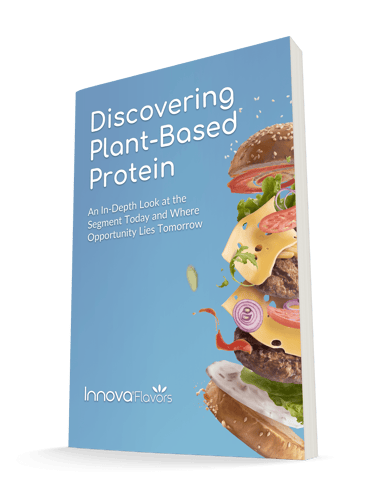Amazing things are happening in the plant-based food category as consumer interest continues to rise. Future growth and the strength of the segment will rely on ongoing flavor innovation, which will take plant-based products to the next level.
Plant-based protein is defined as a meaningful food source of protein made from plants. While the definition is quite simple, the plant-based food category is rather complex. And that’s especially true when it comes to flavoring plant-based protein.
At the end of the day, consumers grade plant-based proteins on one thing, and that’s the flavor. The more plant-based proteins taste like the real thing, the more willing consumers are to continue buying it. While development into alternative plant protein sources is continuous, soy, wheat, and pea are the most prominent and predictable forms of plant-based protein today.
Flavor Masking Agents: 5 Things to Know

The biggest challenge in plant-based protein product development today is overcoming the unwanted or off flavor that comes from these sources. For example, a beany soy flavor or bitter pea protein flavor can deter consumers from craving plant-based products. So how can you ditch those off-notes and elevate your product to deliver a mouth-water flavor experience? Flavor masking agents.
At Innova Flavors, our flavor maskers are custom designed to neutralize off notes commonly associated with alternative protein substrates, which can have a beany, grassy, or cardboard flavor. With nearly 20 years of experience in the plant-based category, we have perfected the art and science of masking and flavoring plant-based foods and are sharing the most important things we think you should know about flavor maskers.
1. There is No One-Size-Fits-All Solution
Different plant proteins contribute different flavor to a substrate. As we mentioned, soy and chickpea will give your product a beany, cardboard flavor while pea gives it a bitter aftertaste.
Flavor maskers need to be custom developed to neutralize or mask off notes. There is no single solution. Each base is unique, meaning one masker might not work for all your soy-based products, for example.
At Innova Flavors, we taste our customers’ bases and conduct an analysis on each substrate to target the ingredients causing the off notes and suppress or block those taste receptors. By muting those unwanted notes and developing the gold standard or target flavor our customers want to achieve, we change the taste perception of the product and deliver a final product that will give consumers a delicious, flavorful experience.
2. The Development Cycle Takes Longer
Developing a custom flavor masker will inevitably require more time to create because it is unique to the needs of the specific substrate. If a substrate has multiple challenges associated with it like moringa, for example, it takes time to find a solution. Moringa not only produces a bitter aftertaste, but also has a strong astringency and requires multiple masking solutions to create the perfect taste and mouthfeel.
At Innova Flavors, we recently worked on a project that featured tempeh as the protein. The challenge here was the profile kept changing with every fresh batch of tempeh we received because each one had a different taste. After we masked the bitterness, the mouthfeel wasn’t quite right to us.
Our trials also presented a new challenge with the color of the tempeh changing from white to off white, green or black, which no one wants the color of their food to be. After tweaking the solution many times, we successfully masked the bitterness, the mouthfeel was pleasant, and the color remained white.
3. Flavor Maskers Aren’t Just for Plant-Based Protein
While flavor masking agents are most used in plant-based protein, flavor maskers can also be used in traditional meat proteins. For example, if you make a hamburger today and reheat it tomorrow, that off note is called “warmed over” and it’s not usually as juicy and tasty as the first day. A meat masker will help mute that warmed over flavor to make the protein more palatable.
4. Flavor Masking Agents Are Natural Ingredients
Flavor maskers are natural ingredients and can be developed to meet all customer requirements such as Whole Foods Compliant. While country-specific criteria can add limitations, maskers can be formulated to meet various requirements.
5. Maskers Aren’t Always Needed
If you have a well-balanced base, you don’t need to use maskers. Flavor maskers do add to the cost, so if the substrate is “clean,” it’s unnecessary to use a flavor masking agent.
Getting Started with Flavor Maskers
Most substrates require the use of both flavor and a masker, especially when it comes to plant-based protein. Working with an experienced flavor company like Innova Flavors, you can be confident that the challenges of masking unpleasant flavors will be expertly overcome and that your final product will be balanced and flavorful.
If you would like to talk to our experts about flavor maskers for your products or taste how our flavor maskers block off notes and transform bases into palate-pleasing final products, you can schedule a free consultation with us here.
